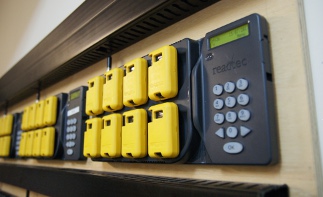
Companies should implement the most up-to-date safety measures to keep their workers safe from vibration injuries, rather than the bare minimum to meet regulatory guidelines.
According to vibration safety expert Reactec, many businesses throughout the UK are still choosing to simply tick boxes when it comes to meeting their safety responsibilities rather than making a firm commitment to protect their staff from crippling injuries such as Hand Arm Vibration Syndrome (HAVS).
Under strict guidelines set out by the Health and Safety Executive (HSE), UK firms are required to keep their staff within acceptable vibration exposure limits when they use power tools or other vibrating equipment, or else face heavy fines for failing to comply with the legislation.
But despite these limits, many companies simply do the minimum required to meet their targets, rather than keep their staff properly protected from harm.
The HSE's Chief Inspector of Construction, Philip White, even highlighted the issue at the recent ICE & Costain 2011 Health and Safety Lecture - where he said that companies had "taken their eye off the ball" when it came to dealing with traditional health risks such as hand arm vibration.
Reactec, which produces the award-winning HAVmeter safety system, believes that using technology to continuously monitor employee's exposure to vibration is the only way to ensure they remain safe in the workplace - and is urging employers to implement rigid safety systems in order to meet their corporate responsibility targets.
Jim O'Hagan, Managing Director of Reactec said: "The HSE introduced legislation in 2005 in the form of the Control of Vibration at Work Regulations, which clearly stipulated how much vibration is acceptable in the form of Exposure Action Values (EAVs) − the daily amount of vibration exposure above which employers are required to take action. The regulations also set out acceptable Exposure Limit Values (ELVs), the maximum amount of vibration anyone can safely be exposed to on a single day.
"Thankfully, this legislation has already prompted some firms to take vibration management seriously, and these companies have implemented effective monitoring systems designed to measure workers' exposure to vibration in order keep them within the safe limits.
"However, while companies face heavy penalties for not keeping to these restrictions, many of them just chose to do the basics required to keep them within the limits rather than actually act as responsible employers.
"The HSE's chief inspector of construction believes that companies are taking their eye off the ball when it comes to vibration safety and he is absolutely right. Hand Arm Vibration Syndrome is a huge risk for anyone who regularly uses vibrating tools and it can devastate lives - but far too many firms are failing to adequately protect their employees.
"The simple fact is that continuous monitoring is far and away the best way to guarantee that your workforce is protected from injury, while also adhering to the HSE restrictions. Doing the bare minimum and ticking the boxes should not be an option - and your staff should be confident that you are always putting their safety first rather than just protecting yourself from liability."
Jim adds that using a continuous monitoring system such as the HAVmeter will not only prevent the inaccuracies that arise from using a manual timesheet system, but will also save businesses time and money in the long run - as well as protecting them from costly compensation claims.
He added: "Manual methods of calculating vibration exposure levels have been shown to be far less reliable or accurate than an automatic system. You rely on untrustworthy timesheets and, even if your staff use a stopwatch to time their exposure, this takes a lot of wasted time and effort to do correctly.
"An automatic system like the HAVmeter not only provides additional safeguards for employee's occupational health, but it also gives companies a robust and foolproof way of protecting themselves against liability for injuries and to avoid compensation claims.
"With such a system, you can accurately collect detailed data of who has used which tool, for how long and when it was used. The level of reporting is so comprehensive that employers are able to determine detailed data on trigger time for the actual number of tools that are being used - and this data can assist in tool servicing intervals and optimise correct tool usage in the work place.
"The benefits and potential costs savings in tool inventory and service costs make the business case for continuous monitoring a compelling proposition. It really is the best way to improve workplace safety, save money and ensure that a business is being as responsible as possible for its staff."
HAVmeter is the UK's leading system for monitoring vibration exposure and is used by many of the country's major construction and manufacturing firms including Tarmac, Aston Martin, Balfour Beatty and Everton FC.